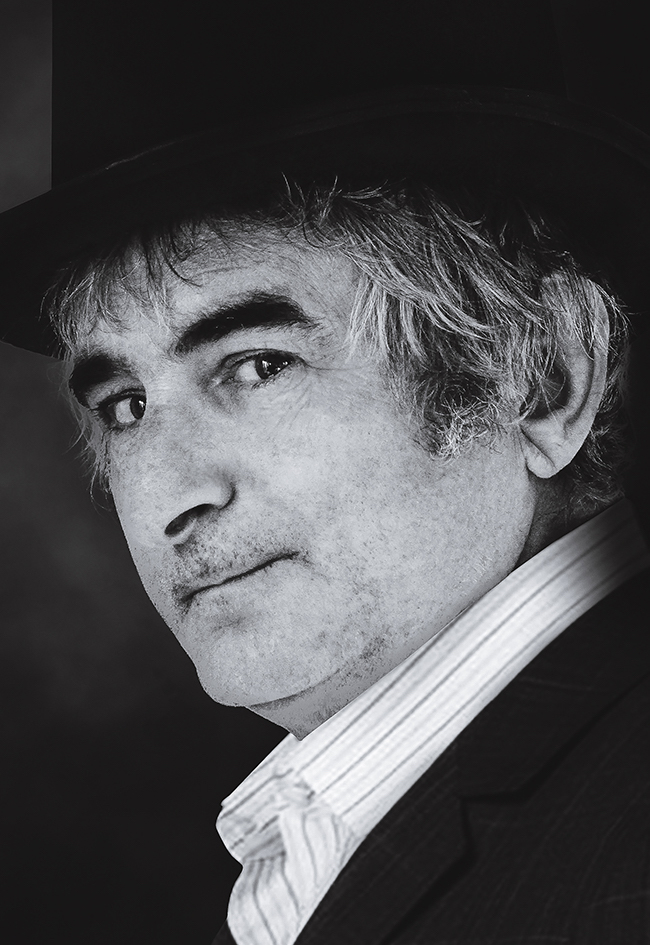Author Malcolm Pryce introduces an innovative online course that shows how the concept behind the 747 Flight Simulator could help you write your first novel.

A century after a simulator teaches you to fly a plane, they invent one for the novel.
It’s called the Howdunnit Machine, a rather innovative online course that attempts to teach the art of writing a novel the way pilots are taught to fly. By simulating the journey.
Crazy? Absolutely. But then they said that about the flight simulator, didn’t they? (Actually, I don’t know, but I’m sure they probably did.)
I devised the Howdunnit Machine to address an issue that had bedevilled me during the years I spent attempting to write my first novel, and I’m pretty sure continues to bedevil new writers to this day.
You know the problem. You sit there at the keyboard possessed of an overwhelming intimation that you want to write. You know what you want to write about. You weigh anchor and after bashing our a few pages, guess what?
You get stuck.
A typical novel is 70 – 80,000 words. Most people run out of steam after 3,000. Desk drawers are full of novels that stopped at this point. So what is the remedy?
It was only when I came to write my second novel that I understood what the solution was. The second novel was just the usual agonised and tormented pilgrimage to the brink of madness and beyond. In comparison to the first it was a breeze.
Because I knew what I was supposed to be doing. I had done it before.
The fact of something being easier the second time round applies to all aspects of human endeavour. The act of performing a task yields an intuitive understanding that you can’t get any other way. It’s called experience. You could read creative writing textbooks till the cows came home and not get it. (What is it about cows anyway? Why won’t they go home?)
So how can you acquire the intuitive understanding that comes from having done something that you’ve never done before? You sign up for the Howdunnit Machine.
Just as every story begins with a Call to Adventure, so does the Howdunnit Machine. The Call, the initial seed idea, is supplied by me and then over the course of 8 weeks, the Howdunnonauts, guided by a structured series of questions and exercises, collaboratively invent a novel based on it. This isn’t one of those online novel writing things, where you actually write the text, it is one in which we work intellectually and imaginatively through the various stages of novel construction, from initial idea to last line.
All the things you would expect to find in a traditional creative writing course—such as character, setting and plot etc.—are still there, but rather than examine them in isolation we consider them as part of the developing story.
The point is this: all those new writers who get becalmed after a few pages just need a method. Any method, it doesn’t matter what, just so long as you have one. The primary requirement is to get to the end—by hook or by crook—of that magical first draft. That is always the hardest part. Once you’ve got those words down you have something to work with. You’ve got the ore to smelt.
Hemingway said all first drafts are shit, which is tremendously liberating. Anyone can write shit. The real craft of writing is getting something down on the page and improving it. Bit by bit. Only amateurs try and get it right first time. It is a process of distillation. Usually it is not until the end of your first draft that you really know what your story is about. It may turn out it is not what you originally thought it was. That doesn’t matter as long as you swear your cleaner to silence.
The underlying structure that the Howdunnit Machine attempts to instil is unashamedly traditional. A sort of storytelling grammar that has emerged through thousands of years spent at grandmother’s knee. Some call it the Hero’s Journey. Anyone writing a novel and hoping to get it past the gatekeepers—usually agents and their readers—would do well to grasp it.
But it’s not just from grandmother that we take our instruction. We also derive three key principles of writing by asking a fundamental question that no one ever seems to ask.
Namely this: what is reading?
We writers devote a lifetime to creating stuff to be read. And yet hardly anyone inquires into this daily miracle that takes place under our nose. However, when we do we find the inquiry yields three powerful insights that form the core curriculum of the Howdunnit Machine.
Malcolm Pryce was born in the UK and has spent much of his life working and travelling abroad. He has been, at various times, a BMW assembly-line worker, a hotel washer-up, a deck hand on a yacht sailing the South Seas, an advertising copywriter and the world's worst aluminium salesman. In 1998 he gave up his day job and booked a passage on a banana boat bound for South America in order to write Aberystwyth Mon Amour. He spent the next seven years living in Bangkok, where he wrote three more novels in the series, Last Tango in Aberystwyth, The Unbearable Lightness of Being in Aberystwyth and Don't Cry for Me Aberystwyth. In 2007 he moved back to the UK and now lives in Oxford, where he wrote From Aberystwyth with Love, The Day Aberystwyth Stood Still, and, most recently, The Case of the Hail Mary Celeste.
Visit Malcolm's website here or get to know him a bit more by following him on Twitter.
Find out more about titles and buy the latest releases from Malcolm Pryce at Bloomsbury.com
Comments